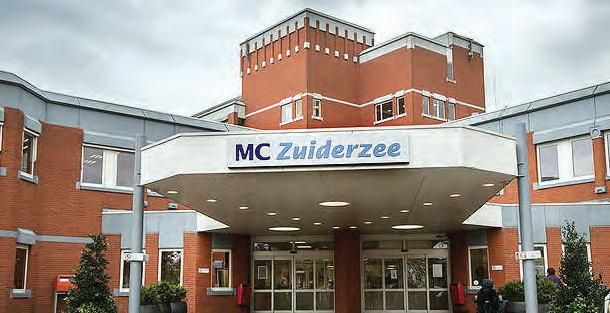In the Netherlands, the medical professional liability (MPL) market is simple, divided between insurers that cover hospitals and those that insure medical professionals. Two mutual insurers, MediRisk and Centramed, insure approximately 95% of all Dutch hospitals.

VvAA, an association of medical professionals with approximately 125,000 members, is the MPL insurance market leader for all healthcare provided outside the hospitals.
VvAA insures general practitioners, dentists, physical therapists, clinics with medical specialists, and veterinarians.
Rising claims create difficult market
During the past decade, the market has experienced a significant increase in severity and frequency of claims. Commercial carriers have left or are in the process of leaving the market. This environment has also resulted in a decreased interest within the reinsurance market.
Trying to move the needle from losses resulting from these situations to a more stable and profitable financial situation, VvAA has structurally increased premiums significantly for its MPL insurance for the last 10 years. Unfortunately the company has not yet reached the desired combined ratio under 100%.
Pressures increase for practitioners and hospitals
A number of trends place a significant amount of pressure on Dutch general practitioners. The correlation between burnout rates and medical liability claims has been clearly documented. Claims and burnout are two sides of the same coin; claims contribute to burnout and burnout can contribute to claims.
These pressures are exacerbated by a shortage of support staff, preferences of younger doctors for part-time employment, patients demanding more cutting-edge care, and continuous changes in the healthcare financing system that are resulting in general practitioners stepping into the role of overall care coordinators for their patents.
Medical specialists are also moving out of the hospital setting into small, specialized clinics so that they can provide care at a lower cost. This trend dovetails with a shift in ownership of clinics by venture capitalists who want to create upscale operations and compete more aggressively with hospitals in ambulatory care.
As the administrative burden on practitioners increases, VvAA is lobbying and working closely with the national government and several associations of medical professionals to reverse this trend. As part of this effort, we’ve identified unnecessary regulations and hope to achieve a change in the paradigm that focuses too heavily on rule-making.
Another significant trend in the Netherlands is governmental and insurer efforts to contain the rising costs of healthcare by moving more care outside of the hospital setting. This means that patients are discharged earlier from the hospital and more care is being provided in ambulatory care settings.
Further, an aging Dutch population has prompted governmental policies aimed at keeping individuals in their homes as long as possible versus moving them into retirement homes. This approach demands more from general practitioners in their care for the elderly, potentially increasing stress and burnout.
Rising number and severity of claims
There are a number of factors driving the increase in claims and claim severity in the Netherlands, a trend that has occurred continuously over the last decade. These factors include falling interest rates, reductions in the government safety net, increases in self-employment, a rise in intangible compensation for MPL claims, and a rise in costs for legal aid provided for patients.
A major reason behind the increase in claims was the introduction of a law on alternative dispute resolution for smaller claims. With less administrative effort, patients can file a claim with a Medical Dispute Committee with ruling capacity up to damages of € 25,000. While this law initially resulted in an increase in claims during 2017 and 2018, data from 2019 show that the numbers have decreased. However, these numbers are still higher than before the law was passed.
Fortunately, the Dutch healthcare system is considered by many to be among the best of the world with regard to patient safety. While the number and severity of claims is rising, it still constitutes a very low percentage of the number of consults provided. However, trends observed in the medical malpractice environment are contributing to an increase in the number and severity of MPL claims in the Netherlands.
Low interest rates negatively impact the percentage used to calculate the net present value of future required cash flows for patients. Low interest rates are an international trend. Since the financial crisis, the Dutch government has been reducing the safety net provided by the country’s social system, a situation that leads to higher claims and payments by insurance companies for various needs of patients.
In the Netherlands, more and more people are choosing to work on a self-employed basis without formal employment. As there is no disability insurance system set up for the self-employed and when an injury, disability, or malpractice claim arises these individuals need financial support. This results in higher claims. Currently the Dutch government is working on a mandatory disability insurance for self-employed citizens to ensure that everyone has access to this type of coverage.
In response to a new law that provides compensation for family members victimized by medical malpractice, Dutch judges have awarded higher intangible compensations for the patients’ pain and suffering. Previously, intangible compensation was only granted in very extraordinary situations. The final contributory factor in the rise in malpractice claims and severity of claims is an increase in costs for legal aid for patients.
Challenges continue in Dutch MPL environment
All in all, the MPL industry in the Netherlands faces a perfect storm in which many trends are causing both a higher frequency and severity of claims. In a long tail environment this creates many difficulties. Despite these challenges, VvAA continues to focus on its primary aim to support all medical professionals in the Netherlands, while working hard to achieve a healthy combined ratio.